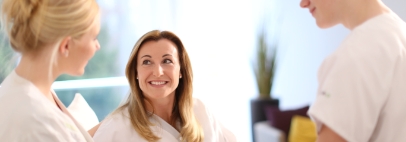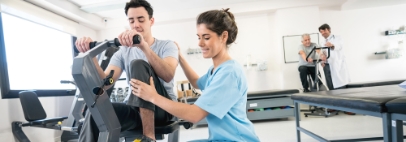Monday to Friday 8.00 am to 5.00 pm
Walking becomes a problem
The symptoms of spinal canal stenosis can vary greatly and are often unspecific at the beginning: the disease often begins with a pulling sensation along the back of the legs or a feeling of tiredness in the legs when walking, which becomes worse the further you walk.
This is accompanied by pain in the lower back radiating into the buttocks and legs. numbness and tingling sensations in the legs are also typical. The walking distance of those affected is constantly shortened. Walking often improves again after standing still for a short time, sitting down or bending forwards and it is possible to walk a little further.
Cycling is often easier than walking and sitting is more comfortable than standing. Pain can also occur when lying down.
If only individual nerves in the spinal canal are compressed, the symptoms are more specific: this can manifest itself as a loss of strength in a muscle or a change in the sensitivity of the skin in a certain area.


.jpg)

